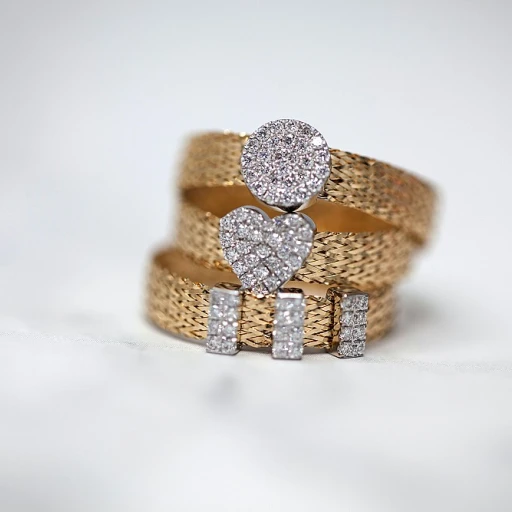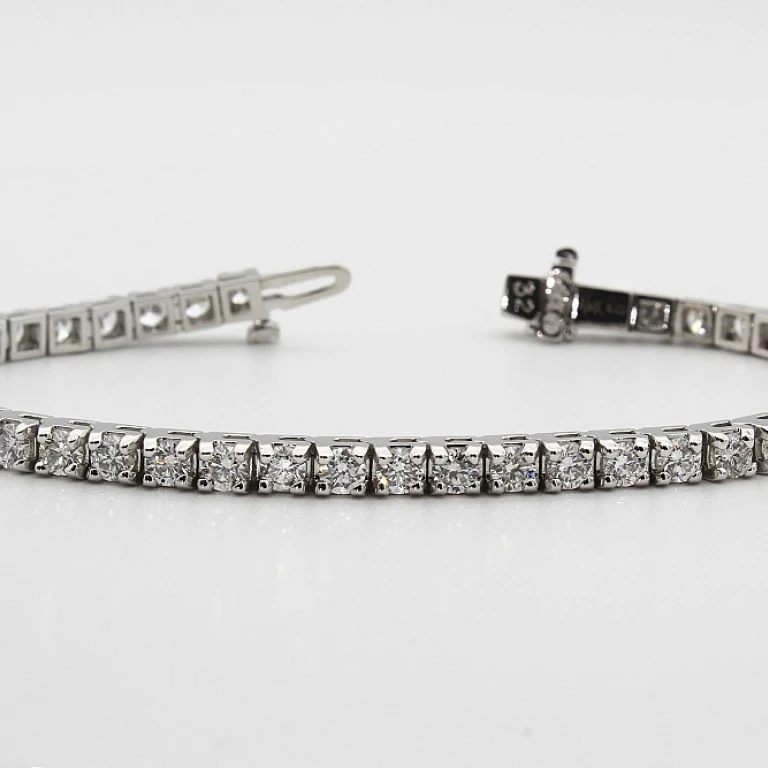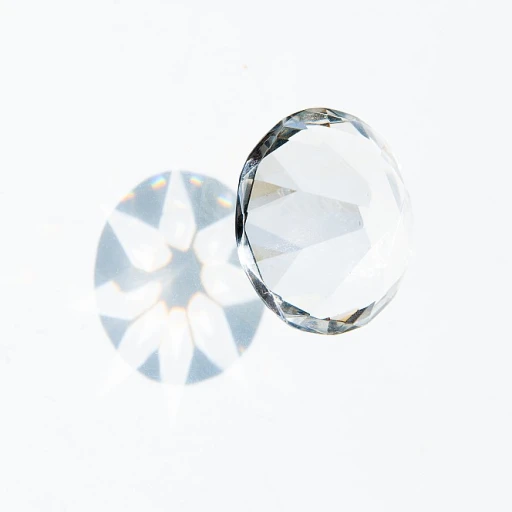
The Historical Significance of Silver and Gold
The Enduring Legacy of Precious Metals
Silver and gold have long sat at the pinnacle of metallurgy, revered and coveted for their intrinsic beauty and rarity. The blend of silver and gold in fine jewelry is not merely an artistic choice, but a reflection of a dynamic interplay that stretches back thousands of years. Throughout history, these metals have been symbols of wealth and status. Gold, with its resplendent glow and resistance to tarnish, was prized by ancient civilizations, from Egypt to Mesopotamia. Silver, often more abundant yet equally esteemed, has graced the regalia of kings and emperors in various cultures. The combination of these precious metals is not a modern invention; rather, it is steeped in tradition and artisanship. The utilization of silver and gold in tandem can be traced to the early methods of Kumbi, a technique where artisans applied silver onto a gold surface, enhancing both the visual contrast and value of their creations. This fascinating blend of materials continues to inspire the expert crafters of today. For enthusiasts keen to delve deeper into the allure of silver in fine jewelry, the aesthetic and historical significance of this metal has been explored extensively in our recent article The Allure of 925 Sterling Silver in Fine Jewelry. Ultimately, the silver-gold jewelry tradition is a rich tapestry that interweaves history, culture, and innovation—standing as testament to humanity's enduring love for beauty and refinement.Crafting Techniques for Silver-Gold Blends
Mastering the Silver-Gold Fusion Techniques
Crafting exquisite silver-gold blends in fine jewelry is an art that calls for precision and exceptional skill. While both metals have unique properties, merging them in a harmonious design requires expertise and careful technique. Understanding the nuances of each material is key, and craftsmen have honed their skills over many years to achieve perfect alloy alchemy. To successfully meld silver and gold, jewelers employ several methods:- Alloy Technique: This involves melting both metals together to form a unified alloy, often producing visually captivating tones. This method allows jewelers to manipulate the percentage of each metal, resulting in diverse color variations and enhancing the piece's allure. Educating oneself on the allure of 925 Sterling Silver can offer insights into its role in the blending process.
- Lamination Process: By carefully layering thin sheets of gold and silver, jewelers can create intricate patterns and designs. This method retains the integrity and individuality of each metal, adding depth to the final creation.
- Soldering: Precision is crucial when soldering gold and silver elements together, as the metals have different melting points. Successful soldering ensures a seamless finish while maintaining the contrasting visual elements.
Design Trends in Silver-Gold Jewelry
Modern Trends in Silver-Gold Creations
The intersection of silver and gold in jewelry design presents a tapestry of innovative styles, elevating the allure of these precious metals to a whole new level. In recent years, the infusion of cutting-edge crafting techniques has dramatically expanded the palette for designers working with silver-gold combinations. These design trends reflect both timeless elegance and contemporary flair. Here's a glimpse into current popular styles:- Mixed Metal Bracelets: The harmonious union of Italian traditions with modern trends has led to the creation of awe-inspiring pieces like silver-gold bracelets, often embodying intricate patterns and textures (for more insights into such creations, visit the allure of Italian 925 silver bracelets).
- Layered Necklaces: These versatile pieces often feature both metals combined in varying proportions, making them ideal for both casual and formal settings.
- Statement Rings: Bold designs have emerged, showcasing silver-gold blends that command attention yet maintain a subtlety synonymous with fine jewelry.
- Earrings with Contrasting Metals: These pieces often utilize silver and gold to create a striking but elegant dichotomy, accentuating the wearer's style.
The Benefits of Silver-Gold Combinations
Exploring the Radiant Benefits
The amalgamation of silver and gold in fine jewelry reflects a harmonious blend of functionality and beauty. This marriage between two distinct metals offers numerous advantages, particularly in enhancing the jewelry's appeal and durability. Firstly, a silver-gold combination tends to offer superior resilience. Gold is known for its enduring qualities; however, when partnered with silver, which is slightly softer, the metal becomes more malleable. This makes crafted pieces not only exquisitely beautiful but also remarkably sturdy, suitable for daily wear without compromising their lustrous appearance. Moreover, silver-gold jewelry can be a more cost-effective option compared to pure gold pieces. As the prices of precious metals fluctuate, this blend allows consumers to invest in fine jewelry that retains the luxury status and visual appeal of gold while incorporating the more affordable silver. The aesthetic diversity is another significant benefit. Designers can play with contrasting colors and finishes, creating unique pieces that capture attention. Shimmering silver tones seamlessly intertwined with the warm, classic hues of gold yield potentially endless possibilities for style expression. In addition to aesthetic advantages, wearing silver-gold combinations also caters to varied skin tones. The interplay of the two metals ensures that the jewelry complements a broader spectrum of complexions, enhancing versatility in wardrobe choices. Ultimately, the silver-gold alloy does more than demonstrate exquisite craftsmanship; it epitomizes a fusion where luxury meets practicality, allowing wearers to enjoy multiple facets of their jewelry without compromise.Challenges in Silver-Gold Jewelry Production
Overcoming the Hurdles of Mixed Metal Jewelry
Creating exquisite silver-gold jewelry pieces is not without its challenges. The art of mixing metals like gold and silver requires a deep understanding of each metal's properties. While the allure of mixed metal jewelry is undeniable, the process of crafting these pieces can be quite complex.
One of the primary challenges lies in the different melting points of silver and gold. Gold, particularly yellow gold, has a higher melting point compared to silver. This discrepancy means that when crafting mixed metal pieces, artisans must carefully control temperatures to prevent one metal from melting too quickly. This requires precision and expertise, ensuring that each piece is crafted to perfection without compromising the integrity of either metal.
Another hurdle is the potential for tarnishing. Silver, especially sterling silver, is prone to tarnish over time, which can affect the overall appearance of the jewelry. To mitigate this, jewelers often apply protective coatings or mix gold with silver in a way that minimizes exposure to elements that cause tarnishing.
Designing mixed metal jewelry also presents aesthetic challenges. The balance between silver and gold must be carefully considered to create harmonious pieces that appeal to modern jewelry trends. This often involves experimenting with different styles, such as layered necklaces or mixed metal rings, to achieve a look that is both unique and timeless.
Despite these challenges, the demand for silver-gold jewelry continues to grow. The ability to wear pieces that combine the elegance of gold with the versatility of silver is highly appealing. As artisans continue to innovate and refine their techniques, the future of mixed metal jewelry looks promising, offering endless possibilities for those who appreciate the art of fine jewelry.
Caring for Your Silver-Gold Jewelry
Preserving the Brilliance of Your Piece
Owning a silver-gold blend piece offers the sophistication of this duality of metals, but ensuring its lasting radiance requires a thoughtful approach to care. Given the unique combination, specific maintenance practices are necessary.
Start by regularly cleaning your jewelry with a soft cloth to remove any tarnish or dirt. This is essential for both silver and gold components. For a more thorough cleaning, consider a mild, pH-balanced soap solution; however, avoid harsh chemicals or abrasive materials that could damage the precious metals.
Storage also plays a crucial role. Keeping your jewelry in a cool, dry place, ideally in a fabric-lined jewelry box or pouch, minimizes the risk of scratches and tarnishing. Some enthusiasts prefer using anti-tarnish strips for extra protection.
The distinctive crafting techniques and alloy proportions mean that a silver-gold piece might react differently over time compared to traditional solid gold or silver jewelry. By learning from modern design trends, it is evident that the right mix not only enhances durability but also increases the complexity of maintenance.
Professional cleaning services can offer specialized care, especially if you've invested in intricate designs or high-value pieces. Such services ensure that your piece retains its original allure, allowing you to enjoy its unique aesthetic while maximizing the benefits of the silver-gold combination. Remember, jewelry is more than just an accessory; it's a window into craftsmanship and historical significance.


